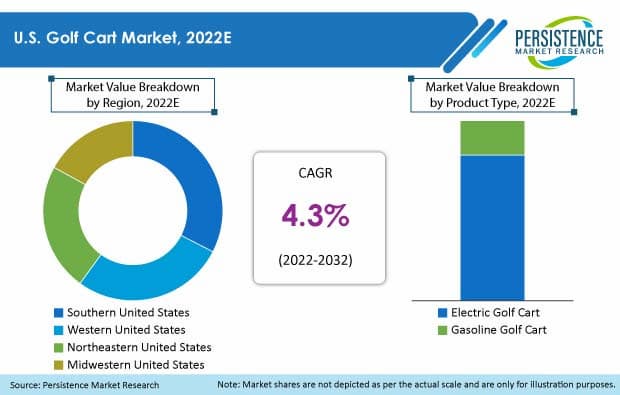Last updated on August 11th, 2023 at 05:44 pm
In the world of golf carts, the debate between electric and gasoline-powered variants has been ongoing for years. Golf carts, whether used on the greens or within gated communities, come in two primary variants: electric and gasoline-powered. Both have their merits, and the choice often boils down to individual preferences and specific needs.
In this article, the advantages and considerations of each type, focusing on their environmental impact, maintenance requirements, and cost-effectiveness. providing you with a comprehensive understanding to make an informed decision.
Table of Contents
Electric Golf Carts
Pros:
- Eco-Friendly: Electric golf carts produce zero emissions, making them a cleaner choice for the environment. They contribute to reduced air pollution and a smaller carbon footprint.
- Eco-Friendly: Electric golf carts produce zero emissions, making them a cleaner choice for the environment. They contribute to reduced air pollution and a smaller carbon footprint.
- Quiet Operation: Electric carts are known for their silent operation, ensuring a peaceful experience, especially in tranquil settings like golf courses.
- Lower Operating Costs: While the upfront cost might be higher, electric golf carts generally have lower running expenses. There’s no need for gasoline, and electricity costs for charging are minimal.
- Safety: Without the need for gasoline storage, there’s a reduced risk of fire hazards.
Cons:
- Limited Range: Electric golf carts have a limited range compared to gasoline variants. Once the battery is depleted, you’ll need to recharge it, which can take several hours.
- Battery Replacement Costs: Over time, the batteries will degrade and require replacement, which can be a significant expense.
Battery Care
- Environmental Impact: Electric golf carts have a minimal environmental footprint due to zero emissions. However, the environmental impact of producing and disposing of batteries should be considered.
- Maintenance Requirements: Regular battery checks, ensuring proper water levels, and consistent charging are crucial for electric golf carts. The overall mechanical maintenance is relatively low since there are fewer moving parts.
- Cost-Effectiveness: While the initial investment is higher, the long-term operating costs are lower, making them cost-effective in the long run, especially with rising fuel prices.
Electric Golf Carts Battery Care
The battery is a crucial component of electric golf carts. Regular maintenance can significantly extend its lifespan.
Here are some essential tips:
- Consistent Charging ensure the batteries are always fully charged but avoid overcharging.
- Water Levels regularly check and maintain the water levels in each battery cell.
- Regular Use avoid letting the golf cart sit unused for extended periods. If you must, use a temperature-compensated battery maintainer.
One effective product for battery maintenance is the BatteryMINDer. It works in tandem with the standard charger, ensuring that the batteries are always in optimal condition. It’s temperature-compensated, preventing under or over-charging, and is compatible with various battery types.
Gasoline Golf Carts
Pros:
- Extended Range: Gasoline golf carts can cover longer distances on a single tank of fuel, making them suitable for larger courses or communities.
- Power: They generally offer more power, especially on rough terrains or uphill paths.
- Quick Refueling: Unlike electric carts that require hours to recharge, gasoline carts can be refueled quickly.
Cons:
- Environmental Concerns: Gasoline golf carts emit carbon dioxide and other pollutants, contributing to environmental degradation.
- Noise: They are noisier than electric variants, which can be disruptive in peaceful environments.
- Higher Operating Costs: The cost of gasoline, especially with fluctuating prices, can make gas golf carts more expensive to operate.
- Environmental Impact: Gasoline golf carts have a more significant environmental impact due to their emissions. They contribute to air pollution and have a larger carbon footprint.
- Maintenance Requirements: Gasoline golf carts require regular engine maintenance, oil changes, air filter replacements, and other standard procedures associated with gasoline engines.
- Cost-Effectiveness: While the upfront cost might be lower than electric golf carts, the ongoing fuel and maintenance expenses can make them less cost-effective in the long run.
Also read : Batteries and Fuel for Gasoline Golf Carts
Gasoline Golf Carts Battery Care
Keep the battery clean and dry. Corrosion can build up on the battery terminals if they are not kept clean and dry. This can cause the battery to lose power or even fail completely. Use a wire brush to clean the terminals and apply a light coat of petroleum jelly to prevent corrosion.
- Check the water level regularly. The battery cells should be filled with distilled water to the level specified by the manufacturer. If the water level is low, add distilled water until it reaches the correct level.
- Charge the battery regularly. The battery should be charged after each use and at least once a month if it is not being used regularly. A battery maintainer can be used to keep the battery charged even if it is not being used.
- Replace the battery when it is no longer holding a charge. The average lifespan of a gasoline golf cart battery is 3-5 years. If the battery is not holding a charge for more than 30 minutes after charging, it is time to replace it.
US Golf Carts Market (2022 – 2023)

According to Persistence market research, U.S. golf cart market, currently valued at US$ 812.1 Mn in 2022, is witnessing a shift towards electric golf carts. This trend is driven by factors such as the increasing number of golf courses, environmental regulations, and a rise in sports enthusiasts. Beyond the greens, golf carts are finding diverse applications in areas like hotels, amusement parks, and even airports. A notable trend in the market is the surge in demand for customized carts, equipped with features like air-conditioning and stereo systems. As the market is projected to grow at a 4.3% CAGR, reaching US$ 1.23 Bn by 2032, technological innovations, including solar-powered and remote-controlled carts, are set to shape its future.
Which is Right for You?
The best choice for you will depend on your individual needs and preferences. If you are looking for a quiet, environmentally friendly, and low-maintenance golf cart, an electric model is the better choice. If you need a powerful golf cart that can handle hills and rough terrain, a gasoline model is the better choice.
Here is a table summarizing the key differences between electric and gasoline golf carts:
| Feature | Electric | Gasoline |
|---|---|---|
| Power and Speed | Less powerful and slower | Less powerful and faster |
| Range | Shorter | Longer |
| Acceleration | Slower | Faster |
| Noise | Quieter | Noisier |
| Emissions | Zero emissions | Produces emissions |
| Maintenance Costs | Lower | Higher |
| Lifespan | Longer | Shorter |
| Costs | More affordable in the long run | More expensive in the long run |
Conclusion
Both electric and gasoline golf carts have their merits. Your choice will depend on your priorities, whether they lean towards environmental concerns, operational costs, or convenience. By understanding the detailed pros and cons of each, you can make an informed decision that best suits your needs. Whichever you choose, ensure you understand the maintenance requirements to get the best out of your investment.
Samantha Green is a golf expert who helps golfers improve their game by giving advice and suggestions on accessories.



1 thought on “Electric vs. Gasoline Golf Carts: Detailed Comparison”